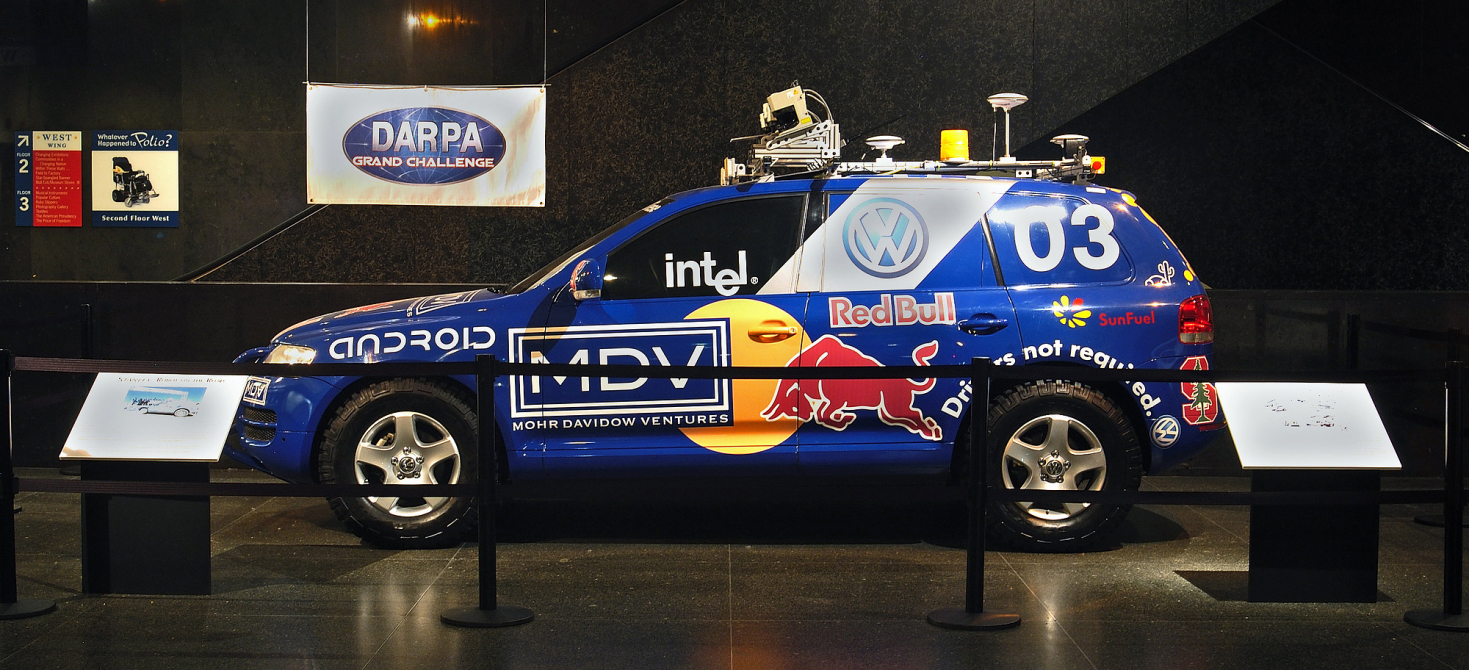Robots are all the rage these days, already here or soon to come into our homes, our workplaces, our cities, and, of course, the military. "Science in American Life: Robots on the Road," one of our newest exhibitions in the recently reopened National Museum of American History, looks at the role of military funding in designing robot cars of the future. The exhibit stars "Stanley," the driverless vehicle that won the 2005 Grand Challenge sponsored by DARPA, the Defense Advanced Research Projects Agency. Using artificial intelligence programs developed by the Stanford Racing Team, the modified VW Touareg won the coveted $2-million prize. In bringing Stanley to the Museum, curator Carlene Stephens is helping us keep pace with invention in our digital age.
You might think that acquiring such artifacts is comparatively easy and that the toughest problems in preserving the history of invention are associated with older devices. While it is true that artifacts associated with a Benjamin Franklin or an Alexander Graham Bell have become rare and precious commodities, recent inventions, especially those at the leading edge, pose unique challenges to museum preservationists. I love the story about unearthing relics of Harvard's pioneering Mark III computer in a gully on a Virginia family farm. Told to me many years ago by computer historian J. A. N. Lee, it was later reported in the Los Angeles Times (August 7, 2000):
---
"On a muggy autumn morning in 1985, computer scientist John Lee and a small band of researchers gathered on a farm in Virginia and began grubbing through a heap of rusted refrigerators, stoves and ancient radios tossed there decades ago by a scrap dealer.
"Buried somewhere in this pile of junk lay pieces of the only Harvard Mark III computer ever built--a house-sized machine festooned with flashing lights and whirring tape reels that Time magazine put on its cover in 1950 as a 'thinking machine' that could have 'more effect on mankind than atomic energy.'
"Lee and his comrades uncovered their first piece in moments--an aluminum arm with a dime-sized slug of steel that was used to read a Mark III memory device.
"'All of us were mentally jumping for joy,' Lee said, recalling the excitement of their discovery.
"Their joy, however, was short-lived. After a year in which they gathered a few boxes of Mark III pieces, the farm was sold and a house was built on top of the junk pile.
"'Gone . . . all gone,' said Lee from his office at Virginia Polytechnic Institute and State University as he gazed at the aluminum arm he had dug up years ago. 'Those people have no idea what is under their patio.'" (Read the full article on the Los Angeles Times website.)
---
Had it a happier ending, I would have loved this story even more. The problem is that, in a cutting-edge area, invention labs routinely discard or cannibalize early prototypes to make way for the next improved version, often resulting in irretrievable losses to history. It is the lucky curator who jumps into the invention stream at exactly the right moment to grab an important artifact in passage. Fortunately, there are happier endings recounted in this issue of "Prototype." For instance, in our feature story, video game inventor Ralph Baer relates how he rescued his original video game documentation that is now preserved in the Museum's Archives Center.
Documenting invention in the digital age poses a further challenge, clearly illustrated by the aforementioned Stanley. The Lemelson Center's MIND program works with the Museum's Archives Center to locate and collect inventors' historical materials. With Stanley, the accompanying technical and design records are not on paper but almost exclusively in the form of digital files, which are increasingly the norm with modern-day inventions. At the Lemelson Center, we are working hard to keep up with these changing documentary practices, which pose unique problems of access and preservation.
Until next month,
Art Molella, Jerome and Dorothy Lemelson Director
From Prototype, December 2008
Photo courtesy of Smithsonian Archives







